 Copyright Protection for Architects
Copyright Protection for Architects
A question often raised is, “How do we protect our designs?” How can we deter a client from overextending their license to our ideas and using our designs beyond their initially intended or contractually bound uses? As creatives, how do we protect our creativity?
This week at EntreArchitect Podcast, Copyright Protection for Architects with Abe Cohn of Howard M. Cohn & Associates.
Abe’s Origin Story
Abe has always been interested in entrepreneurship, and finds it fascinating to deal with so many people in so many different areas who have such different and novel ideas. He started a tech company a few years ago and after dealing with a ton of intellectual property law there, it made sense for him to move over to the legal sides of things.
What’s the difference between copyright, trademarks and patents?
Intellectual property is a broad category that includes the intangibles involved in a new creation. Depending on what that is, you can turn to a specific piece of that property.
If you were to walk into a shoe store and saw a swoosh; you would immediately recognize that product as a part of the Nike corporation. In that case, the swoosh is a trademark: a mark that serves as an identifier for a good. There’s also a servicemark, which is attached to a service being provided. Legally, the process is exactly the same.
Next, you walk into a car shop and saw a gorgeous engine inside a Lamborghini. That engine is a creation that someone has invested a lot of time, money and talents into making. How do we protect that person’s rights? Patents protect novel processes, things that people are building and the ideas behind them.
In any Harry Potter book, JK Rowling turned to copyrights to protect her creative manifestations. Copyrights protects her literary work and ensures that others can’t steal, use or copy her brilliant ideas.
How are architects protected by copyright law?
Architects have claims to different copyrights, like the drawings and designs of the building. About 25 years ago, Congress passed the Architectural Works Copyright Protection Act to expand the scope of what it is that architects can actually copy, which states,
“An original design of a building created in any tangible medium of expression, including a constructed building or architectural plans, models, or drawings…Protection extends to the overall form as well as the arrangement and composition of spaces and elements in the design but does not include individual standard features.”
Now not only are the plans and drawings covered, but the building itself can be copyrighted. You can’t get a copyright on the door itself, but as it relates to some other features because your creative work is novel in that each composite features interacts with the adjacent features.
What if you’re designing something that isn’t novel, like a standard Colonial house?
Works that are copyrightable have to be in concrete form and have to be substantially unique enough. Part of the design could be copyrightable, while others are not because they aren’t unique.
Why do you need a copyright?
The moment you put your unique enterprise down, there’s a preliminary set of rights. You can’t stop someone from using it until you register with the copyright office. The legal distinction of registering your copyright is having it on paper is a notice from the government to prove that you own it so you can stop someone from stealing it. You can submit the forms via the mail or online at Copyright.gov.
What if I’ve done one design for one home, and then someone wants to build twenty more with the same design?
From the client’s point of view, the intuition is that since they’ve just payed the architect to do something, they own that thing that’s been done for them. The truth is that the client has payed for the end result, and doesn’t necessarily own the copyright on the whole thing he’s bought. Think of a wedding photographer: the couple hired the photographer for pictures, but what are they getting? They’re getting the physical copies of the pictures, but they don’t own the rights to the photos.
If you’re an architect who wants to be sure you’re getting paid for specifically for one home or for twenty renditions, you want to make sure you negotiate those rights into that contract in advance and in tandem with a competent attorney.
What do you do if someone does infringe on your rights?
Hire an attorney and have them send a letter or email to cease and desist. The sticky point can come when the architect might not have the resources to go after a huge developer. If you’re confident enough in your case and you have the resources to take them to court, then you do. The most important thing is to set yourself up in the beginning so you’re protected.
What is the one thing that small firm architects can do today to build a better business tomorrow?
“Don’t neglect being on the web: get an amazing website, YouTube channel, etc. Start speaking about what you’re passionate about and how people in your particular industry can benefit from your services. Be involved and get excited.” – Abe Cohn
Connect with Abe directly at [email protected], online at CohnPatents.com or on Facebook, Twitter, and YouTube.
Visit our Platform Sponsors
TruStile is a leader in high end, architectural interior doors. Visit them at TruStile.com to learn more!
Tanglewood Conservatories combines the romanticism of the 19th century glass architecture with state-of-the-art technology today. Learn more at TanglewoodConservatories.com.
Referenced in this Episode
EntreArchitect Profit Plan Course (free)
Review us on iTunes
The post EA149: Copyright Protection for Architects [Podcast] appeared first on EntreArchitect // Small Firm Entrepreneur Architects.
